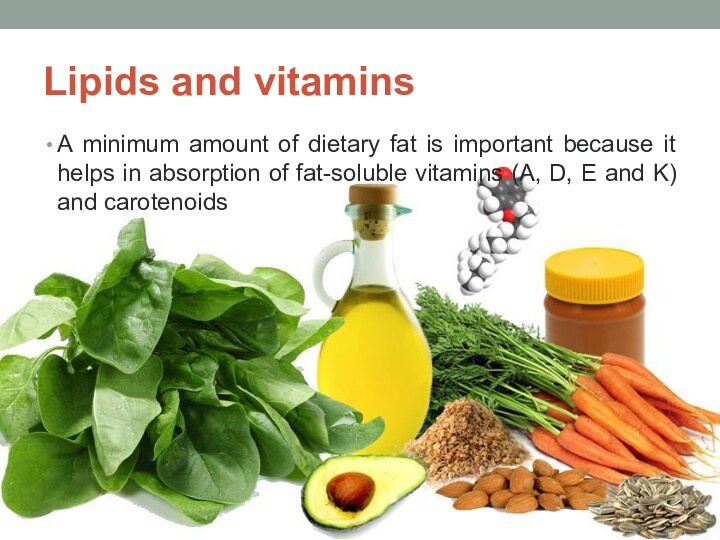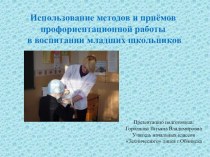- Главная
- Разное
- Бизнес и предпринимательство
- Образование
- Развлечения
- Государство
- Спорт
- Графика
- Культурология
- Еда и кулинария
- Лингвистика
- Религиоведение
- Черчение
- Физкультура
- ИЗО
- Психология
- Социология
- Английский язык
- Астрономия
- Алгебра
- Биология
- География
- Геометрия
- Детские презентации
- Информатика
- История
- Литература
- Маркетинг
- Математика
- Медицина
- Менеджмент
- Музыка
- МХК
- Немецкий язык
- ОБЖ
- Обществознание
- Окружающий мир
- Педагогика
- Русский язык
- Технология
- Физика
- Философия
- Химия
- Шаблоны, картинки для презентаций
- Экология
- Экономика
- Юриспруденция
Что такое findslide.org?
FindSlide.org - это сайт презентаций, докладов, шаблонов в формате PowerPoint.
Обратная связь
Email: Нажмите что бы посмотреть
Презентация на тему Lipids
Содержание
- 2. PlanWhat are Lipids?Hydrolyzable/Non-hydrolyzable lipidsFatty acidsTypes of lipidsLipids in the body
- 3. I. What are lipidsLipids are molecules that
- 4. I. What are lipidsWhat are lipids soluble
- 5. I. What are lipidsLipids are molecules that
- 6. II. Hydrolyzable/Non-hydrolyzable lipidsLipids that contain a functional
- 7. II. Hydrolyzable/Non-hydrolyzable lipids
- 8. II. Hydrolyzable/Non-hydrolyzable lipidsNonhydrolyzable lipids lack such functional
- 9. III. Fatty acidsFatty acids are long chain
- 10. III. Fatty acidsThe membrane that surrounds a
- 11. IV. Types of lipidsWaxes/fats and oilsThese are
- 12. Mono/poly unsaturated and saturatedSaturated fats are typically
- 13. V. Lipids in the bodyLipids are utilized
- 14. V. Lipids in the bodyThere are, however,
- 15. V. Lipids in the bodyLipids play diverse
- 16. Lipids and chronic diseasesFats in diet play
- 17. Dietary lipidsSome of the fatty acids need
- 18. Effects of PUFADietary lipids help in biochemical
- 19. Foods with PUFAPUFA is present in three
- 20. Food supplements and fortificationThe diet needs to
- 21. Lipids and vitaminsA minimum amount of dietary
- 22. Скачать презентацию
- 23. Похожие презентации
PlanWhat are Lipids?Hydrolyzable/Non-hydrolyzable lipidsFatty acidsTypes of lipidsLipids in the body






















Слайд 2
Plan
What are Lipids?
Hydrolyzable/Non-hydrolyzable lipids
Fatty acids
Types of lipids
Lipids in
the body
Слайд 3
I. What are lipids
Lipids are molecules that contain
hydrocarbons and make up the building blocks of the
structure and function of living cells. Examples of lipids include fats, oils, waxes, certain vitamins, hormones and most of the non-protein membrane of cells
Слайд 4
I. What are lipids
What are lipids soluble in?
Lipids
are not soluble in water. They are non-polar and
are thus soluble in nonpolar environments like in choloroform but not soluble in polar environments like waterWhat do lipids consist of?
Lipids have mainly hydrocarbons in their composition and are highly reduced forms of carbon. When metabolized, lipids are oxidized to release large amounts of energy and thus are useful to living organisms
Слайд 5
I. What are lipids
Lipids are molecules that can
be extracted from plants and animals using nonpolar solvents
such as ether, chloroform and acetone. Fats (and the fatty acids from which they are made) belong to this group as do other steroids, phospholipids forming cell membrane components etc
Слайд 6
II. Hydrolyzable/Non-hydrolyzable lipids
Lipids that contain a functional group
ester are hydrolysable in water. These include neutral fats,
waxes, phospholipids, and glycolipids
Слайд 8
II. Hydrolyzable/Non-hydrolyzable lipids
Nonhydrolyzable lipids lack such functional groups
and include steroids and fat-soluble vitamins (e.g. A, D,
E, and K). Fats and oils are composed of triacylglycerols or triglycerides. These are composed of glycerol (1,2,3-trihydroxypropane) and 3 fatty acids to form a triester. Triglycerides are found in blood tests. Complete hydrolysis of triacylglycerols yields three fatty acids and a glycerol molecule
Слайд 9
III. Fatty acids
Fatty acids are long chain carboxylic
acids (typically 16 or more carbon atoms) which may
or may not contain carbon-carbon double bonds. The number of carbon atoms are almost always an even number and are usually unbranched. Oleic acid is the most abundant fatty acid in nature
Слайд 10
III. Fatty acids
The membrane that surrounds a cell
is made up of proteins and lipids. Depending on
the membrane’s location and role in the body, lipids can make up anywhere from 20 to 80 percent of the membrane, with the remainder being proteins. Cholesterol, which is not found in plant cells, is a type of lipid that helps stiffen the membrane. Image Credit: National Institute of General Medical Sciences
Слайд 11
IV. Types of lipids
Waxes/fats and oils
These are esters
with long-chain carboxylic acids and long-alcohols. Fat is the
name given to a class of triglycerides that appear as solid or semisolid at room temperature, fats are mainly present in animals. Oils are triglycerides that appear as a liquid at room temperature, oils are mainly present in plants and sometimes in fishMono/poly unsaturated and saturated
Those fatty acids with no carbon-carbon double bonds are called saturated. Those that have two or more double bonds are called polyunsaturated. Oleic acid is monounsaturated
Слайд 12
Mono/poly unsaturated and saturated
Saturated fats are typically solids
and are derived from animals, while unsaturated fats are
liquids and usually extracted from plants.Unsaturated fats assume a particular geometry that prevents the molecules from packing as efficiently as they do in saturated molecules. Thus the boiling points of unsaturated fats is lower.
Слайд 13
V. Lipids in the body
Lipids are utilized or
synthesized from the dietary fats. There are in addition
numerous biosynthetic pathways to both break down and synthesize lipids in the body.
Слайд 14
V. Lipids in the body
There are, however, some
essential lipids that need to be obtained from the
diet. The main biological functions of lipids include storing energy as lipids may be broken down to yield large amounts of energy. Lipids also form the structural components of cell membranes and form various messengers and signalling molecules within the body
Слайд 15
V. Lipids in the body
Lipids play diverse roles
in the normal functioning of the body:
they serve as
the structural building material of all membranes of cells and organellesthey provide energy for living organisms - providing more than twice the energy content compared with carbohydrates and proteins on a weight basis
they function as molecular messengers and signalling molecules in the body
Lipids are also biomarkers of disease and are involved in several pathological conditions. Lipids are also known to play a role in genetic modification and influence risk of chronic disease
Слайд 16
Lipids and chronic diseases
Fats in diet play a
role in chronic diseases. Up to 70% of all
cancers in the United States are attributable to diet for example. Around half of the population according to the USDA develops a diet-related chronic disease responsible for the leading causes of death like heart disease, cancer, stroke, diabetes, and arteriosclerosis. This raises the annual health costs to $250 billion in the USA. High fat, especially trans fats and unsaturated fats lead to heart disease, degenerative and inflammatory arthritis, osteoporosis, obesity, cancer etc
Слайд 17
Dietary lipids
Some of the fatty acids need to
be taken in diet. This includes essential fatty acids
(EFAs), linoleic acid (LA, an omega-6 fatty acid, 18:2n-6), and a-linolenic acid (LNA, an omega-3 fatty acid, 18:3n-3). These help in formation of polyunsaturated fatty acids (PUFAs) used in cellular structures and as precursors for the biosynthesis of many of the body’s regulatory molecules like long-chain PUFAs, arachidonic acid, eicosapentaenoic acid (EPA, 20:5n-3), and docosahexaenoic acid (DHA, 22:6n-3) and eicosanoids. DHA again is necessary for normal neural and retinal development in the infant and young child
Слайд 18
Effects of PUFA
Dietary lipids help in biochemical and
physiological functions as modulators of cell actions and genes.
For example, the n-6 and n-3 PUFAs bind to the peroxisome proliferator-activated receptors (PPARs) on genes. This PPAR gene is important for lipid and carbohydrate metabolism. These also play a role in chronic diseases like diabetes and inflammatory conditions.PUFA in diet has been found to reduce risk of cardiovascular disease and cancers. In addition, n-3 fatty acids are known to lessen the severity and minimize symptoms of chronic inflammatory diseases, including rheumatoid arthritis and inflammatory bowel disease, and may even benefit in correcting psychological disorders.
PUFAs modulate eicosanoid biosynthesis in various tissues and cell types and this can influence gene expression.
Слайд 19
Foods with PUFA
PUFA is present in three forms
in food. These are LNA in vegetables, oilseeds, and
nuts, and EPA and DHA in cold water fishes and algae.SDA is rich in plant oils (such as hempseed oil and black currant seed oil) but can be isolated and concentrated from marine fish. Since n-3 fatty acids cannot be synthesized in the body they must be either ingested directly or formed from LNA
Слайд 20
Food supplements and fortification
The diet needs to be
low in saturated fats. Essential fatty acids and n-3
PUFA, however, are important in the diet.Sources of n-3 PUFAs are also added directly to infant formula to provide sufficient DHA for normal development of the nervous system during early infancy. These supplements are added to both dairy and non dairy products to reduce risk of heart disease, cancer risk and risk of obesity. The n-3 PUFA are contained and added in fish meal, fish oil, vegetable oils, linseed oil and canola oil etc





























